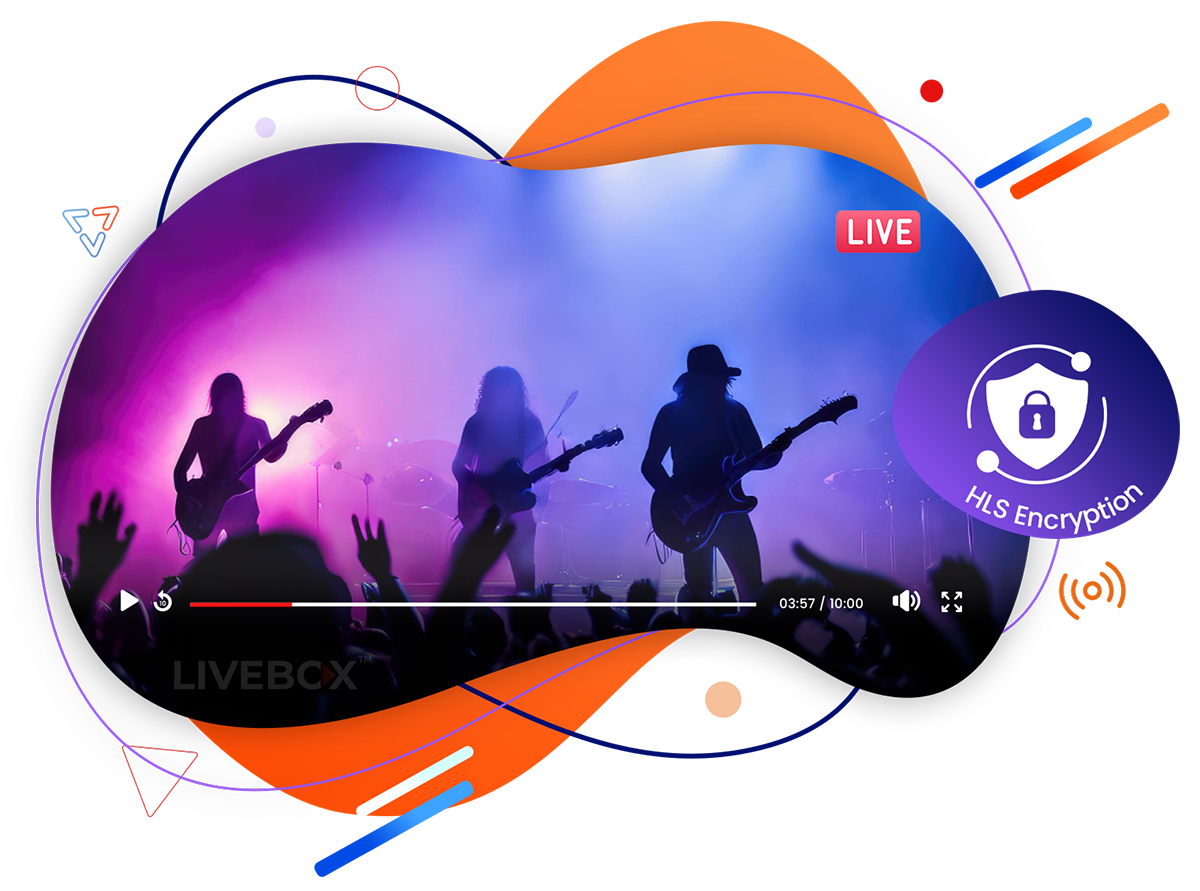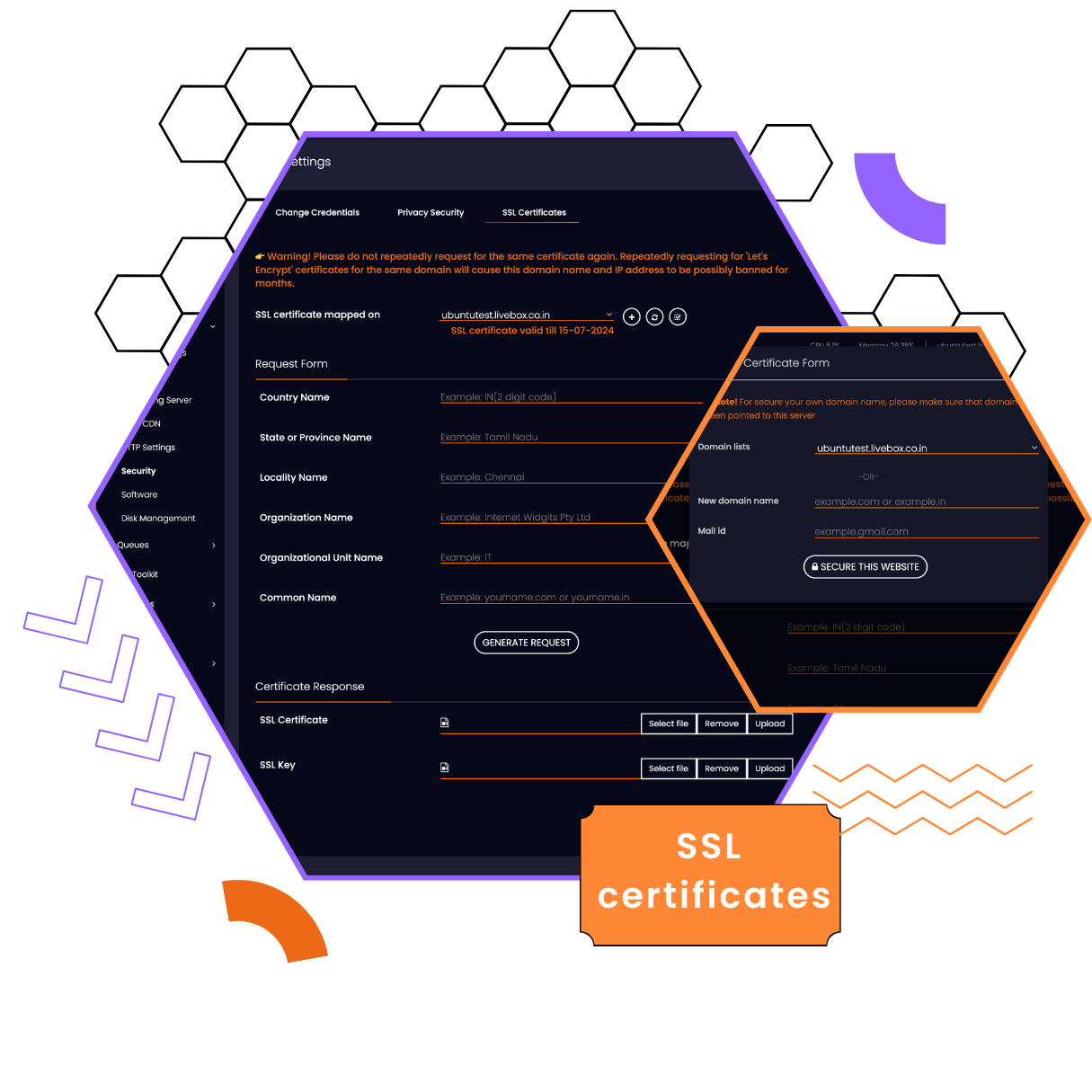Get In Touch
CD TECH Innovations Pvt Ltd
#95, Pantheon Road, Egmore, Chennai, TN
INDIA 600008
Inquiries
- enquiry@cdtech.in
- Ph +91 80690 78888
CD TECH Innovations Pvt Ltd
#95, Pantheon Road, Egmore, Chennai, TN
INDIA 600008
Integrate HLS (HTTP Live Streaming) encryption with Livebox to secure your video streams against unauthorized access and piracy. Learn how Livebox utilizes AES-128 encryption to protect your content, ensuring a safe and reliable streaming experience for your audience.

High-level technical details and approaches on integrating HLS (HTTP Live Streaming) encryption with Livebox can help ensure secure streaming experiences for your audience.
AES-128 (Advanced Encryption Standard with a 128-bit key) is a symmetric encryption algorithm that encrypts video content to ensure its security during transmission. It uses a 128-bit key to transform the data into a ciphered format that is unreadable without the corresponding decryption key. This algorithm is highly secure and efficient, making it ideal for live streaming applications. The 128-bit key size strikes a balance between security and computational efficiency, ensuring that encryption does not significantly impact streaming performance.
Key exchange is the process of securely distributing the decryption keys to authorized viewers. In HLS encryption, the encrypted video segments are accompanied by a key file, which is used to decrypt the content. However, the key file is not directly accessible; instead, it is delivered through a secure method, often over HTTPS, ensuring that only authorized users can retrieve and use it. The security of the key exchange process is crucial, as unauthorized access to the key would compromise the entire encryption mechanism.
Token authentication is a security measure used to validate the authenticity of users before granting them access to the encrypted content. In this method, when a viewer requests access to the content, a unique token is generated and verified against a server. This token typically includes information such as the user’s identity, session validity, and access permissions. Only viewers with a valid token can access the content, which prevents unauthorized users from viewing or distributing the video stream. This method adds an extra layer of security by ensuring that even if someone intercepts the stream, they would still need the correct token to decrypt and view the content.
Livebox ensures comprehensive security by encrypting video data throughout the entire streaming process. The encryption starts right from the moment the video stream is ingested into the Livebox server, continuing through storage and finally during playback on the end-user’s device. The Advanced Encryption Standard (AES-128) is used, which is a widely recognized method for securing digital content. This end-to-end encryption ensures that the video data remains protected from unauthorized access at every stage, preventing tampering or piracy during both transit and storage.
To implement this in Livebox, users can easily enable encryption within the platform’s dashboard. Once inside the dashboard, navigate to the channel settings where you can turn on encryption for the specific channels. You can then configure the encryption settings to use AES-128, ensuring that all video data passing through that channel is automatically encrypted. This setup provides a robust layer of security that’s vital for maintaining the integrity of sensitive video content.


Managing encryption keys is a critical aspect of maintaining the security of encrypted video streams. Livebox handles this by securely managing and distributing encryption keys to clients that are authorized to access the stream. The encryption keys are never exposed to unauthorized users; instead, they are delivered through secure HTTPS endpoints. This method of key management helps prevent unauthorized access to the encrypted content, ensuring that only legitimate users can decrypt and view the video stream.
In the setup process, users must configure a secure key delivery method. Typically, this involves setting up a server endpoint that will handle the distribution of the encryption keys. It’s crucial to ensure that this key server is secure, meaning it should be accessible only over HTTPS, and protected by strong authentication mechanisms. This step is essential to prevent key interception and unauthorized access to the encrypted streams.
To further secure access to the streams, Livebox uses token-based authentication. This method ensures that only authenticated viewers can access the stream by requiring a valid token before allowing playback. These tokens are unique and time-limited, meaning they can expire after a set duration, preventing long-term unauthorized access. Additionally, the tokens can be configured to include specific rules, such as restricting access based on user location or device type, adding another layer of security to the streaming process.
To enable token-based authentication in Livebox, users must access the authentication settings within the dashboard. Here, they can activate token authentication for their streams and customize the token parameters. This includes setting the token expiration time, determining how tokens are generated, and specifying rules that govern who can generate or use these tokens. By doing so, users can ensure that only authorized viewers with valid tokens can access the streams, significantly reducing the risk of unauthorized access.


Livebox provides several advanced access restriction features to ensure that only the intended audience can view the content. These features include geo-blocking, which restricts access based on the viewer’s geographical location, and IP whitelisting/blacklisting, which allows or denies access from specific IP addresses. Additionally, Livebox supports password protection for streams that require an extra layer of security. These measures collectively help to control who can access the streams, ensuring that the content is only available to the desired audience.
To implement these restrictions, users can navigate to the access control settings in the Livebox dashboard. Here, they can configure geo-blocking by specifying which countries or regions should be allowed or denied access. IP whitelisting or blacklisting can be set up by entering the specific IP addresses that should be permitted or blocked. For additional security, password protection can be enabled, requiring viewers to enter a password before they can access the stream. These settings allow users to tightly control access to their content, protecting it from unauthorized viewers.
To protect data in transit, Livebox employs SSL/TLS encryption, which secures the communication between the server and the client. SSL (Secure Sockets Layer) and TLS (Transport Layer Security) are cryptographic protocols that provide encryption and secure identification over a network. This ensures that any data sent between the Livebox server and the viewer’s device is encrypted, making it much harder for malicious actors to intercept or tamper with the data. By using SSL/TLS, Livebox ensures that all interactions with its server, including streaming and key management, are protected by strong encryption.
Enabling SSL/TLS encryption in Livebox involves ensuring that your server is running over HTTPS. Users can manage SSL/TLS certificates directly from the Livebox dashboard, either by using automatically managed certificates from “Let’s Encrypt” or by uploading custom certificates. This setup is crucial for maintaining the security of the entire streaming process, ensuring that all data transmitted between the Livebox server and the client remains secure and encrypted.

HLS encryption plays a critical role in safeguarding internal communications within enterprises, ensuring that sensitive information such as town halls, corporate announcements, and strategic meetings remains secure from unauthorized access. By encrypting video data during transmission and storage, companies can maintain the confidentiality of their internal communications, preventing potential leaks or corporate espionage. This level of security not only protects business interests but also helps enterprises comply with industry-specific regulations, such as GDPR, HIPAA, or SOX, thereby avoiding legal repercussions and maintaining trust with stakeholders.
Educational institutions benefit from HLS encryption by ensuring that access to lectures, tutorials, and other educational materials is restricted to enrolled students and authorized staff. This protection is essential in maintaining the integrity and exclusivity of educational content, especially in an era where remote learning has become increasingly prevalent. By securing online content, institutions can prevent unauthorized access and distribution, thereby protecting their intellectual property and ensuring that students’ personal data and learning progress are kept confidential.
For content creators and streamers, HLS encryption is a vital tool in protecting their intellectual property from piracy and unauthorized distribution. By encrypting their streams, creators can ensure that only authorized viewers, such as paying customers or subscribers, can access their content. This level of security not only safeguards their creative work but also enables them to implement monetization strategies, such as pay-per-view events or subscription services, with confidence. As a result, content creators can maximize their revenue potential while building trust with their audience by providing secure and exclusive content.
Government agencies handle highly sensitive and classified information that requires the utmost level of security during transmission. HLS encryption ensures that only authorized personnel can access critical live streams, such as confidential briefings, crisis management sessions, or strategic planning meetings. By preventing unauthorized access, encryption helps protect national security interests and maintains the integrity of governmental operations. Furthermore, secure communication practices foster public trust, demonstrating the government's commitment to protecting sensitive information and managing crises effectively.

In conclusion, implementing HLS encryption using Livebox provides a robust and secure infrastructure for streaming video content. It ensures content privacy, maintains data integrity during transmission, and provides flexibility to integrate various security measures to match the specific business needs of enterprises, educational institutions, content creators, and government agencies. For further technical details and advanced configurations, refer to the official Livebox documentation.
Welcome to
Livebox
Schedule a live demo with our live experts to see how Livebox™ can help you to do live streaming the expert way.
Live Streaming is here